Constantinople, posted on the waterway between the continents and guarded by the girdle of its landward and seaward walls, through all assaults remained impregnable. At moments the Empire might be confined within the circle of the city’s fortifications, but the assailants retired discomfited and still the capital preserved the heritage of civilization from the menace of the barbarian. The city was Constantine’s majestic war memorial: the Greek East should not forget the crowning mercy of his victory over Licinius, By its foundation Constantine created the imperial power-house within which could be concentrated the forces of a realm which was sustained by the will of the Christians’ God and which, in the fifth century, was further secured by the acquisition of Our Lady’s Robe, the palladium of New Rome. It is well that we should be reminded of that act of the first Christian Emperor.
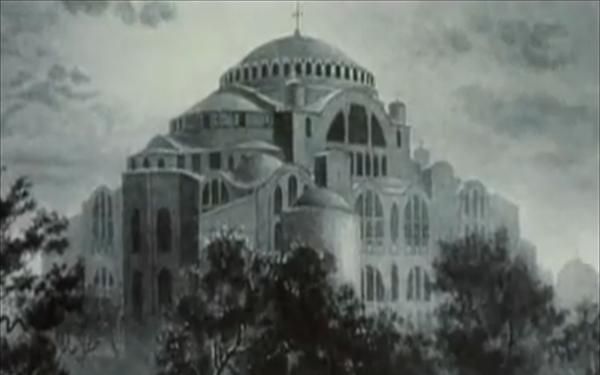
And did the Roman Empire die at some date during the closing years of the sixth century or in the first decade of the seventh?
But may it not be truer to say that the Roman Empire did not die, but was transformed from within, and that the factor which in essentials determined the character of that transformation was the dream of the Empire’s future as Constantine conceived it? He had been called to rule a pagan Empire; he brought from his rule in the West the knowledge of the tradition of Roman government.
At the battle of the Milvian Bridge he had put to the test the Christian God, and the God of the Christians had given him the victory over Maxentius: that favour made of Constantine an Emperor with a mission, he was ‘God’s man’, as he called himself. When he went to the East he came into lands where language, literature, and thought were all alike Greek. There could be no idea of transforming the East into a Latin world. That was the problem: a pagan Empire based on a Roman tradition of law and government ruled by a Christian Emperor who had been appointed to build up his realm upon the foundation of a unified Christian faith—an Empire centred in a Christian capital and that capital surrounded by a deeply rooted tradition of Hellenistic culture.

Those are the factors which had to be brought ‘to keep house together’. And this Christian Emperor, incorporating in his own person the immense majesty of pagan Rome, could not, of course, make Christianity the religion of the Roman State—that was unthinkable—but the man to whom the Christian God had amazingly shown unmerited favour had a vision of what in the future might be realized and he could build for that future. Within the pagan Empire itself one could begin to raise another—a Christian—Empire: and one day the walls of the pagan Empire would fall and in their place the Christian building would stand revealed. In a Christian capital the Roman tradition of law and government would draw its authority and sanction from the supreme imperium which had been the permanent element in the constitutional development of the Roman State; that State itself, become Christian and Orthodox, would be sustained through a Catholic and Orthodox Church, while Greek thought and Greek art and architecture would preserve the Hellenistic tradition. And in that vision Constantine anticipated, foresaw, the Byzantine Empire. And thus for any comprehending study of that Empire one must go as far back at least as the reign of Constantine the Great.

And from the first the rulers of the Empire recognized the duty which was laid upon them, their obligation to preserve that civilization (the pagan Hellenistic culture, the Roman tradition, the Christian Church) which they had inherited, to counter the assaults of the barbarians from without or the threat from within-—the menace of those barbarian soldiers who were in the Empire’s service. It was indeed a task which demanded the highest courage and an unfaltering resolution. ‘If ever there were supermen in history, they are to be found in the Roman emperors of the fourth century.’ And this duty and the realization that Constantinople was the ark which sheltered the legacy of human achievement remained constant throughout the centuries. The forms of the defence might change, but the essential task did not alter. When in the seventh century Egypt, Palestine, and Syria were lost, the system of imperial defence had perforce to be reorganized, but that reorganization was designed to effect the same traditional purpose.
Within the Empire the culture of the Hellenistic world which had arisen in the kingdoms of the successors of Alexander the Great lives on and moulds the achievement of East Rome. For the Byzantines are Christian Alexandrians. In art they still follow Hellenistic models; they inherit the rhetorical tradition, the scholarship, the admiration for the Great Age of classical Greece which characterized the students of the kingdom of the Ptolemies. That admiration might inspire imitation, but it undoubtedly tended to stifle originality.
Those who would seek to establish that at some time in the history of East Rome there is a breach in continuity, that something distinctively new came into being, must at least admit that the culture of the Empire knew no such severance: it persisted until the end of the Empire itself.

It is true that Hellenistic civilization had absorbed some oriental elements, but the crucial question is: Did the Byzantine Empire adopt any further really significant elements from the East beyond those which had already interpenetrated the Hellenistic world? One may point to the ceremony of prostration before the ruler (proskynesis), to mutilation as a punishment, possibly to some forms of ascetic contemplation, to the excesses of Syrian asceticism, to Greek music and hymnody derived from Syrian rhythms and rhythmic prose, and to cavalry regiments armed with the bow—what more ? The Christian religion itself came, it is true, originally from Palestine, but it early fell under Hellenistic influence, and after the work of the Christian thinkers of Alexandria—of Clement and Origen—Christianity had won its citizenship in the Greek world. Until further evidence be adduced, it may be suggested that the Empire which resolutely refused to accept the Eastern theories of the Iconoclasts was in so doing but defending its own essential character, that the elements which in their combination formed the complex civilization of the Empire were indeed the Roman tradition in law and government, the Hellenistic tradition in language, literature, and philosophy, and a Christian tradition which had already been refashioned on a Greek model.
What were the elements of strength which sustained the Empire in its saecular effort? They may be briefly summarized. Perhaps the factor which deserves pride of place is the conviction that the Empire was willed by God and protected by Him and by His Anointed. It is this conviction which in large measure explains the traditionalism, the extreme conservatism of East Rome: why innovate if your State is founded on Heaven’s favour? The ruler may be dethroned, but not the polity; that would have been akin to apostasy. Autocracy remained unchallenged. And, with God’s approval secure, the Byzantine Sovereign and the Byzantine State were both Defenders of the Faith. To the Byzantine the Crusades came far earlier than they did to the West, for whether the war was waged with Persia or later with the Arabs, the foes were alike unbelievers, while the standard which was borne at the head of the East Roman forces was a Christian icon—at times one of those sacred pictures which had not been painted by any human hand. The Byzantine was fighting the battles of the Lord of Hosts and could rely upon supernatural aid.
And the concentration of all authority in the hands of the Vicegerent of God was in itself a great source of strength. On the ruins of the Roman Empire in western Europe many States had been created: in the East the single State had been preserved and with it the inheritance from an earlier Rome, the single law. In the West men’s lives were lived under many legal systems—tribal law, local law, manorial law—and the law of the central State fought a continuing battle for recognition : in the East one law and one law alone prevailed, and that Roman law emanated from a single source, the Emperor; even the decisions of the Councils of the Church needed for their validity the approval of the Sovereign. The precedents established by Constantine were upheld by his successors, and under the Iconoclasts the challenge to imperial authority raised by the monks demanding a greater freedom for the Church was unavailing. The Patriarch of Constantinople lived in the shadow of the imperial palace: within the Byzantine Empire there was no room for an Eastern Papacy.
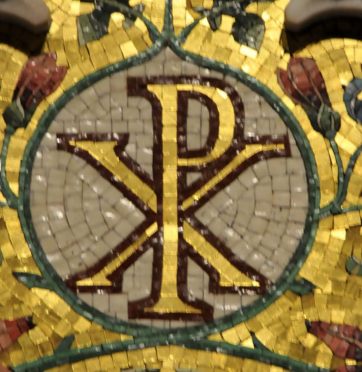
In the constitutional theory of the Empire no hereditary right to the throne was recognized, though at times hereditary sentiment might have great influence. When, under the Macedonian dynasty, that sentiment placed a student emperor upon the throne, a colleague performed -those military duties which remained part of the imperial burden. That immense burden of obligation imposed upon the ruler—the responsibility both for the temporal and spiritual welfare of his subjects—fashioned the Byzantine imperial ideal, and that ideal puts its constraint upon the Sovereign ; it may make of him another man :
The courses of his youth promised it not. The breath no sooner left his father’s body, But that his wildness mortified in him Seemed to die too.
So it was with Basil II: ‘with all sail set he abandoned the course of pleasure and resolutely turned to seriousness’. It is to wrong the Byzantine Emperors to picture them as cloistered puppets : the Emperor was not merely the source of all authority both military and civil, the one and only legislator, the supreme judge, but it was his hand, as George of Pisidia wrote, which in war enforced the will of Christ.
The East Roman State demanded money—much money: no Byzantine Sovereign could ‘live of his own’. During the chaos of the breakdown of the imperial administration in the third century of our era a prodigious inflation sent all prices rocketing sky-high and the economy of the Empire threatened to relapse into a system of barter. But the fourth-century reform restored a money economy and taxation which could be adapted to the current needs of the Government.
While the west of Europe under its barbarian rulers was unable to maintain the complex financial system of Rome, the needs of the East Roman State were safeguarded by a return to a system which enabled it to pay its soldiers in money, while, if military force should fail, the diplomacy of Constantinople could fall back upon the persuasive influence of Byzantine gold. It was the tribute derived from the taxation of its subjects which enabled the Empire to maintain a regular army schooled in an art of war—an art perpetually renewed as the appearance of fresh foes called for a revision of the military manuals. This small highly trained army must at all costs be preserved: no similar force could be hurriedly improvised on an emergency. War for the Empire was no joust, but a desperately serious affair. Therefore risks must not be run: ambushes, feints, any expedient by which irreplaceable lives could be saved were an essential element of Byzantine strategy.
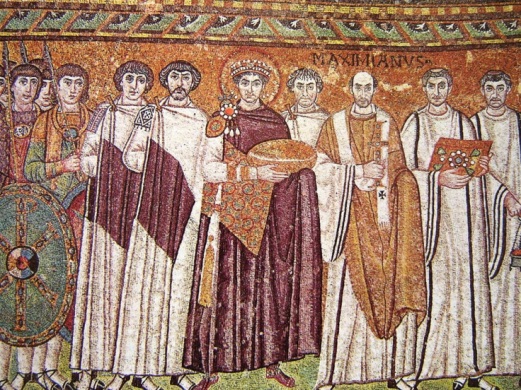
The Empire was always inclined to neglect the fleet when no immediate danger threatened from the sea. During the first three centuries of our era the Mediterranean had been a Roman lake. The only barbarian kingdom formed on Roman soil which took to the sea was that of the Vandals in North Africa and before their fleets the Empire was powerless: the seaward connexions between the East and the West were snapped. The Emperor Leo even feared that the Vandals would attack Alexandria : Daniel, the Stylite saint whom he consulted, assured him that his fears were groundless, and in the event the holy man’s confidence was justified. Justinian made an extraordinary effort in his sea-borne attack upon North Africa, but after the overthrow of the Vandal kingdom we hear of no further naval operations until the Arabs developed their sea-power in the seventh century. When Constans II reorganized the fleet and left Constantinople for Sicily (a.d. 662), his aim, as Bury suggested, must have been from a western base to safeguard North Africa and Sicily from the Arabs in order to prevent the encirclement of the Empire: ‘If the Saracens won a footing in these lands Greece was exposed, the gates of the Hadriatic were open, Dalmatia and the Exarchate were at their mercy’ (Bury). But Constans died, his successors kept the imperial navy in the eastern Mediterranean, and the Saracen fleet drove the Romans out of Carthage. North Africa was lost.
When the Caliphate was removed from Syria to Mesopotamia Constantinople was released from any serious menace from the sea; the navies of Egypt and Syria were in decline, and in consequence the Byzantine navy was neglected. Under the Macedonian house the East Roman fleet played an essential part in the imperial victories, but later the Empire made the fatal mistake of relying upon the navy of Venice and thus lost its own control of the sea. The naval policy of the Byzantine State did but react to external stimulus much as the Republic of Rome had done in former centuries.
Army and fleet defended the Empire from external peril, but the force which maintained its internal administration was the imperial civil service. Extremely costly, highly traditional in its methods, often corrupt, it was yet, it would seem, in general efficient: the administrative machine worked on by its own accumulated momentum. Under weak and incapable rulers it could still function, while the edicts of reforming emperors would doubtless be competently filed and then disregarded. We possess no adequate documentary evidence for the history of this imperial service: the historians took it for granted, and they tend to mention it only when some crying scandal aroused popular discontent. Yet its activity is one of the presuppositions which rendered possible the longevity of the Empire.
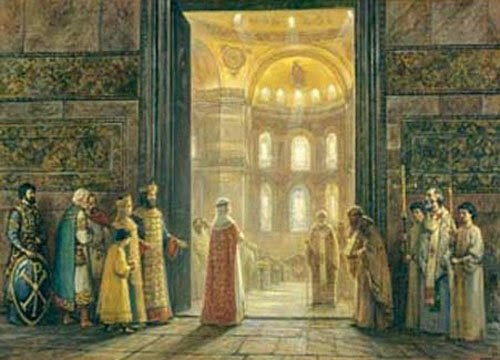
And the service of the Orthodox Church to East Rome must never be forgotten in any estimate of the factors which sustained the Byzantine State. ‘The Latin Church‘, as Sir William Ramsay said in a memorable lecture in 1908, ‘never identified itself with the Empire. So far as it lowered itself to stand on the same level as the Empire it was a rival and an enemy rather than an ally. But in the East the Orthodox Church cast in its lot with the Empire: it was coterminous with and never permanently wider than the Empire. It did not long attempt to stand on a higher level than the State and the people but on that lower level it stood closer to the mass of the people. It lived among them. It moved the common average man with more penetrating power than a loftier religion could have done. Accordingly the Orthodox Church was fitted to be the soul and life of the Empire, to maintain the Imperial unity, to give form and direction to every manifestation of national vigour.’
The Church might disapprove of the abnormal asceticism of a Stylite saint; but that asceticism awoke popular enthusiasm and consequently the Church yielded: it recognized St. Simeon Stylites and made of Daniel the Stylite a priest. That is a symbol of the catholicity of Orthodoxy. And through the services of the Church the folk of the Empire became familiar with the Old Testament in its Greek form (the Septuagint) and with the New Testament which from the first was written in the ‘common’ Greek speech of the Hellenistic world, and the East Roman did truly believe in the inspiration ofthe Bible and its inerrancy.
And thus because it was the Church of the Byzantine people, because its liturgy was interwoven with their daily lives, because its tradition of charity and unquestioning almsgiving supplied their need in adversity, the Orthodox Church became the common possession and the pride of the East Romans. The Christian faith became the bond which in large measure took the place of a common nationality. And was their Church to be subjected to the discipline of an alien Pope who had surrendered his freedom to barbarous Frankish rulers of the West? Variations in ritual usage might be formulated to justify the rejection of papal claims, but these formulations did but mask a profounder difference —an instinctive consciousness that a Mediterranean world which had once been knit together by a bilingual culture had split into two halves which could no longer understand each other. The history of the centuries did but make the chasm deeper: men might try to throw bridges across the cleft—communion between the Churches might be restored, even Cerularius in the eleventh century did not say the last word, but the underlying ‘otherness’ remained until at last all the king’s horses and all the king’s men were powerless to dragoon the Orthodox world into union with the Latin Church.
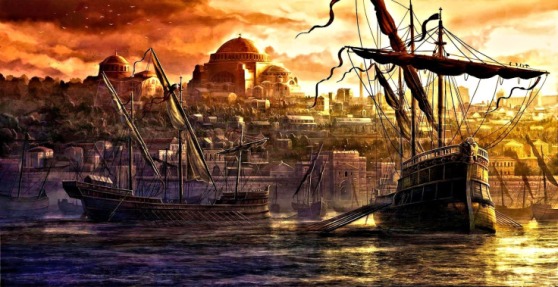
And, above all, it must be repeated, Constantinople itself, the imperial city (η βασιλεύουσα πόλις), secure behind the shelter of its fortifications, sustained the Empire alike in fair and in foul weather. The city was the magnet which attracted folk from every quarter to itself: to it were drawn ambassadors and barbarian kings, traders and merchants, adventurers and mercenaries ready to serve the Emperor for pay, bishops and monks, scholars and theologians. In the early Middle Age Constantinople was for Europe the city, since the ancient capital of the West had declined, its pre-eminence now but a memory, or at best a primacy of honour. Constantinople had become what the Piraeus had been for an earlier Greek world; to this incomparable market the foreigner came to make his purchases and the Byzantine State levied its customs on the goods as they left for Russia or the West.
Because the foreigner sought the market, New Rome, it would seem, failed to develop her own mercantile marine, and thus in later centuries the merchants of Venice or Genoa could extort perilous privileges from the Empire’s weakness. Within the imperial palace a traditional diplomacy of prestige and remote majesty filled with awe the simple minds of barbarian rulers, even if it awoke the scorn of more sophisticated envoys. It may well be that the Byzantines were justified in developing and maintaining with scrupulous fidelity that calculated ceremonial, ‘But your Emperor is a God’ one barbarian is reported to have said—him, too, the magnet of Constantinople would attract and the Empire would gain a new ally.
Yet this magnetism had its dangers. All roads led to New Rome, and a popular general or a member of that Anatolian landed aristocracy which had been schooled in military service might follow those roads and seek to set himself upon the imperial throne. Prowess might give a title to the claimant, and the splendid prize, the possession of the capital, would crown the venture, for he who held Constantinople was thereby lord of the Empire. Yet though the inhabitants might open the gates to an East Roman pretender, the Byzantines could assert with pride that never through the centuries had they betrayed the capital to a foreign foe. That is their historic service to Europe.

It becomes clear that the welfare of the Byzantine State depended upon the maintenance of a delicate balance of forces—a balance between the potentiores—the rich and powerful—and the imperial administration, between the army and the civil service, and, further, a balance between the revenues of the State and those tasks which it was incumbent upon the Empire to perform. Thus the loss of Asia Minor to the Seljuks did not only deprive East Rome of its reservoir of man-power, it also crippled imperial finances.
Above all, in a world where religion played so large a part it was necessary to preserve the balance—the co-operation—between Church and State. ‘Caesaropapism’ is a recent word formation by which it has been sought to characterize the position of the Emperor in relation to the Church. It is doubtless true that in the last resort the Emperor could assert his will by deposing a Patriarch; it is also true that Justinian of his own motion defined orthodox dogma without consulting a Council of the Church. But that precedent was not followed in later centuries; an Emperor was bound to respect the authoritative formulation of the faith; and even Iconoclasm, it would seem, took its rise in the pronouncements of Anatolian bishops, and it was only after this episcopal initiative that the Emperor intervened. Indeed the Byzantine view of the relation which should subsist between Church and State can hardly be doubted : for the common welfare there must be harmony and collaboration.
The more one studies the life of the East Romans the more one is conscious of the weight of care which overshadowed it: the fear of the ruthless tax-collector, the dread of the arbitrary tyranny of the imperial governor, the peasant’s helplessness before the devouring land-hunger of the powerful, the recurrent menace of barbarian invasion: life was a dangerous affair; and against its perils only supernatural aid—the help of saint, or magician, or astrologer could avail.
And it is to the credit of the Byzantine world that it realized and sought to lighten that burden by founding hospitals for the sick, for lepers, and the disabled, by building hostels for pilgrims, strangers, and the aged, maternity homes for women, refuges for abandoned children and the poor, institutions liberally endowed by their founders who in their charters set out at length their directions for the administration of these charities. It is to the lives of the saints that one must turn, and not primarily to the Court historians if one would picture the conditions of life in East Rome. And because life was insecure and dangerous, suspicions were easily aroused and outbreaks of violence and cruelty were the natural consequence. We shall never realize to the full the magnitude of the imperial achievement until we have learned in some measure the price at which that achievement was bought.
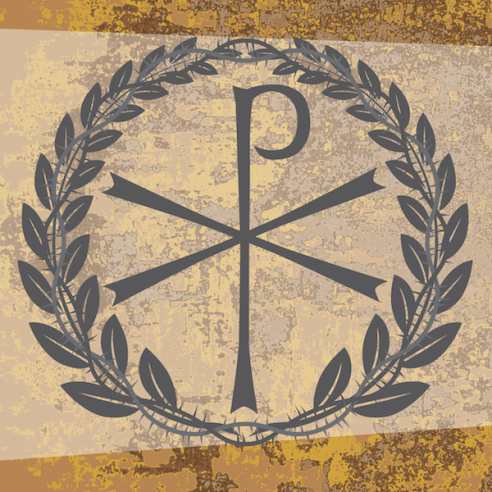
To summarize in a few words the character of that achievement:
(i) as a custodian trustee East Rome preserved much of that classical literature which it continuously and devotedly studied;
(ii) Justinian’s Digest of earlier Roman law salved the classical jurisprudence without which the study of Roman legal theory would have been impossible, while his Code was the foundation of the Empire’s law throughout its history. The debt which Europe owes for that work of salvage is incalculable;
(iii) the Empire continued to write history, and even the work of the humble Byzantine annalist has its own significance: the annalists begin with man’s creation and include an outline of the history of past empires because ‘any history written on Christian principles will be of necessity universal’: it will describe the rise and fall of civilizations and powers: it will no longer have a particularistic centre of gravity, whether that centre of gravity be Greece or Rome: a world salvation needed a world history for its illustration: nothing less would suffice. And to the Christian world history was not a mere cyclic process eternally repeating itself, as it was to the Stoic. History was the working out of God’s plan: it had a goal and the Empire was the agent of a divine purpose. And Byzantine writers were not content with mere annalistic: in writing history the East Roman not only handed down to posterity the chronicle of the Empire’s achievement, he also recorded the actions of neighbouring peoples before they had any thought of writing their own history. Thus it is that the Slavs owe to East Rome so great a debt;
(iv) the Orthodox Church was a Missionary Church, and from its work of evangelization the Slav peoples settled on its frontiers derived their Christianity and a vernacular Liturgy;
(v) it was in an eastern province of the Empire—in Egypt—that monasticism took its rise. Here was initiated both the life of the solitary and the life of an ascetic community. It was by a Latin translation of St. Athanasius’ Life of St. Antony, the first monk, that monasticism was carried to the West, and what monasticism—Egypt’s greatest gift to the world—has meant in the history of Europe cannot easily be calculated. It was the ascetics of East Rome who fashioned a mystic theology which transcending reason sought the direct experience of the vision of God and of union with the Godhead (theosis).
(vi) further, the Empire gave to the world a religious art which to-day western Europe is learning to appreciate with a fuller sympathy and a larger understanding.
Finally, let it be repeated, there remains the historic function of Constantinople as Europe’s outpost against the invading hordes of Asia. Under the shelter of that defence of the Eastern gateway western Europe could refashion its own life: it is hardly an exaggeration to say that the civilization of western Europe is a by-product of the Byzantine Empire’s will to survive.
(Source: “Byzantium, An Introduction to East Roman Civilization”, Edited by Norman H. Baynes and H. St. L. B. Moss)

Research-Selection for NovoScriptorium: Anastasius Philoponus
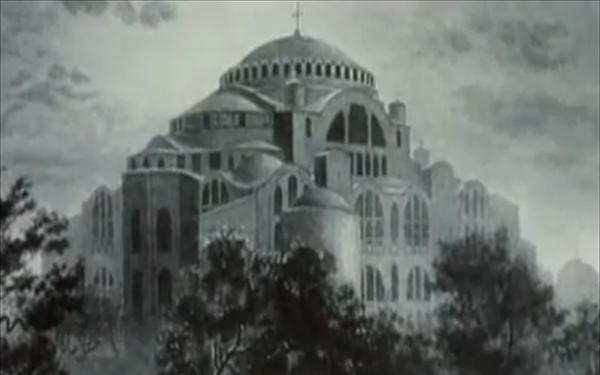
Reblogged this on Die Goldene Landschaft.
LikeLike